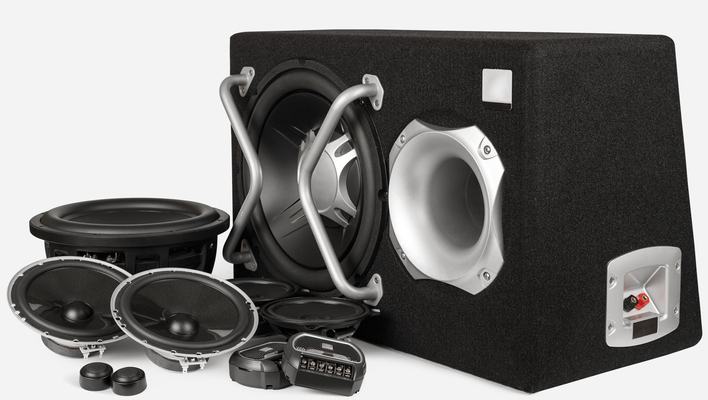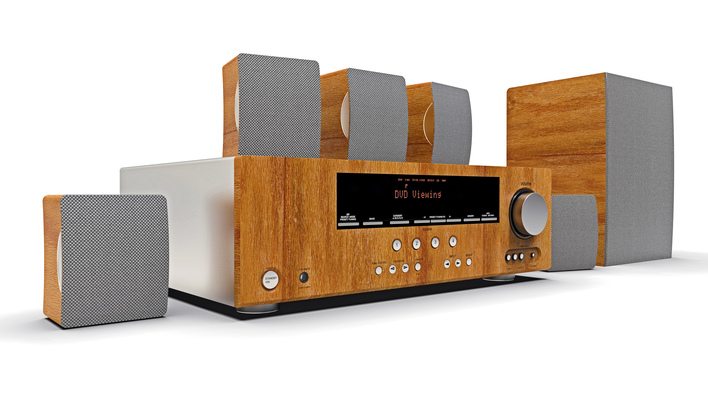Home theater subwoofers are different from car subwoofers. However, with simple modifications, a home theater subwoofer can provide the best bass in your car.
Adding a subwoofer is one of the surest ways to improve the quality of sound in your car. Subwoofers produce low-frequency sounds resulting in improved sound quality.
In addition, adding a subwoofer in your car helps increase the lifespan of the other small speakers, for instance, the tweeters. This is because the added subwoofer concentrates on producing low-frequency sounds, leaving the tweeters to focus on the high-frequency sounds they are best suited to offer.
Though a guaranteed success in improving your car’s sound system, a car subwoofer is overly expensive, and many people may not afford it. However, the good news is that with simple modifications, the extra home theater subwoofer in your house could give you the best sound quality in your car.
Yes, although these two speaker systems differ in several ways, it’s possible to use a home theater subwoofer in a car.
Benefits of Installing a Home Theater Subwoofer in Your Car
Cost Reduction
Quality car subwoofers are overly expensive. Instead of spending hundreds of dollars on getting a new car subwoofer, you can easily modify the extra home theater subwoofer for use in your car. When adequately altered and matched with a good amp and head unit, a home theater subwoofer will give you the best sound quality.
Quality Bass Response
Installing a home theater subwoofer in your car will produce deep bass sounds and allow you to listen to sounds your high-end speakers can’t deliver. Most car stereo speakers will have frequencies up to 50Hz.
A home theater sub in your car can produce frequencies as low as 20Hz or lower. This enables you to get the lowest notes in your music.
Lower Distortion
A home theater subwoofer in your car takes up the task of producing low frequencies. This relieves the smaller speakers enabling them to concentrate on frequencies within their comfortable range, thus making sounds with less distortion.
Clarity in Music
A quality home theater subwoofer can offer the most precise sounds when properly installed. This is because it has the speed and transient response to capture the fastest bass.
You must do some simple modifications to your home theater subwoofer before installing it in your car, as these two speaker systems are different.

Home Theater Subwoofer vs. Car Subwoofer
Home theater subwoofers are active subwoofers, whereas car subwoofers are passive subs. This means that home subwoofers are powered by an inbuilt amplifier, while car subwoofers use an external amp to drive the speaker.
Car subwoofers and home theater subs also differ in their speaker efficiency capability. Home subwoofers tend to be more efficient than car subs because they are designed to push more air and produce sound in large listening areas.
Another difference between car subwoofers and home theater subs is their impedance rating level. Impedance rating refers to the amount of resistance a speaker offers to the current being supplied by the amplifier. Car speakers generally have an impedance rating of 4 ohms, while home theater subs have an impedance rating of 8 ohms.
Because of these differences in the two speaker systems, you must first modify your home subwoofer before installing it in your car. Installing a home theater subwoofer in a vehicle is not difficult, but it does require some simple modifications.
Here Is a Step-by-Step Guide on How To Do the Conversion and the Installation.
Step 1: Get a Suitable Car Amplifier
Home theater subwoofers are designed as active speaker systems. This means that they possess an inbuilt amplifier whose voltage is approximately 120 volts AC. Such an amplifier cannot work with most car batteries whose voltage is 12 volts DC.
You’ll therefore need to get a suitable car amplifier to use with the home theater subwoofer.
Step 2: Remove the Electronics From the Home Theater Subwoofer
Home theater subwoofers generally have different electronics such as a circuit board, transformer, and power cord in the subwoofer box. To use the home theater subwoofer in your car, you don’t need these electronics. The only thing you need is the subwoofer driver and the enclosure.
You, therefore, have to remove the unnecessary materials from the subwoofer box. To do this:
- Get rid of the screws that hold the plug adapters in place and take off the assembly.
- Once you get into the subwoofer box, remove the power cord and disconnect all the wires to the speaker.
- If you cannot dissociate the body, find a way to cut an opening into the subwoofer box.
When doing this, ensure the hole is the same size as the speaker terminal block you will be installing.
Step 3:Understand the Required Wiring Method
There exist two wiring methods depending on the number of voice coils in a speaker.

Your subwoofer can have one or two coils. A subwoofer with one coil connects the wires to two terminals, and a speaker with two coils connects the cables on four terminals.
Step 4: Attach the Amplifier
You need to attach your chosen amplifier to the subwoofer. The most common way of doing this is to hook the amplifier on the top of the subwoofer.
Step 5: Wire the Subwoofer
To wire the amplifier to the subwoofer, connect the positive wire from the speaker to the positive terminal on one amplifier channel and vice versa.
Also, ensure there is a small jumper wire between the two middle terminals and the cables running from the amplifier are wired to the utmost terminals on the speakers.
Step 6:Test the Connection
After the wiring, hook up the amplifier to the subwoofer channel on your car’s stereo head unit. Next, turn on your car and play some music to test the connection.
Also Read: Super Tweeter vs Tweeter: What’s the Difference?
Conclusion
When adequately modified and installed, a home theater subwoofer will serve best in improving your car’s sound system. However, it would help if you incorporated all the safety measures, such as switching off your car engine when doing the installation.
Lastly, ensure to invest in a quality amplifier to power your installed home theater subwoofer driver.

